Share
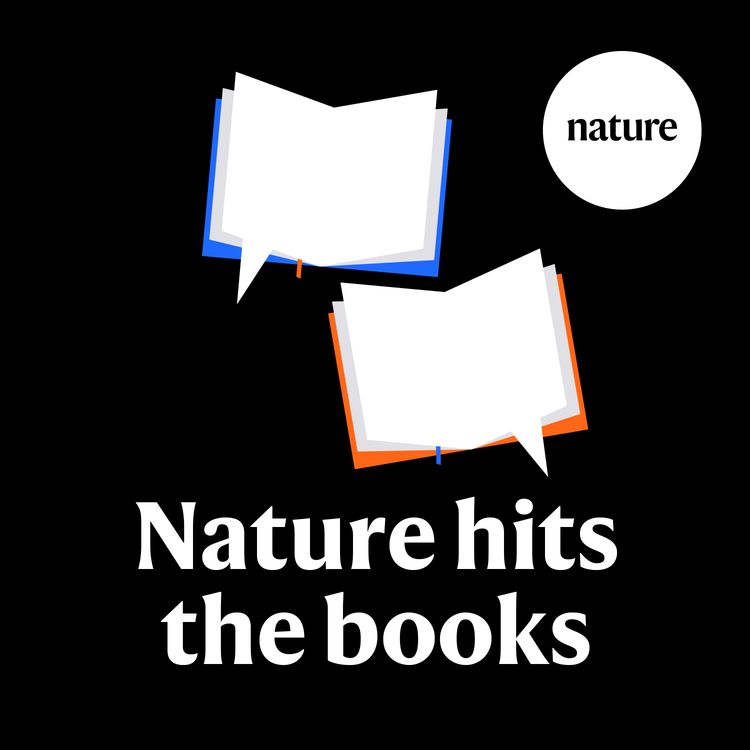
Nature Podcast
Navigating planets, plays and prejudice — a conversation with Aomawa Shields
•
In the latest episode of Nature hits the books, astronomer Aomawa Shields discusses her memoir Life on Other Planets: A Memoir of Finding My Place in the Universe.
The book tracks her career path as a scientist and a classically-trained actor, explores her experiences as an African American woman in STEM, and interrogates science’s place in culture — some of the things we discussed in this podcast.
Life on Other Planets: A Memoir of Finding My Place in the Universe Aomawa Shields Constable (2023)
Music supplied by Airae/Epidemic Sound/Getty images.
More episodes
View all episodes

Bone marrow in the skull plays a surprisingly important role in ageing
35:10|00:46 The role of skull bone marrow in ageingDuring ageing, bone marrow in the skull becomes an increasingly important site of blood-cell production. This is in stark contrast to most bones where the ability of marrow to make blood and immune cells declines. Studies in mice and humans showed that ageing results in skull bone-marrow expanding, and in mice this marrow was more resistant to inflammation and other hallmarks of ageing. The team behind the work hope by understanding this process better it may be possible to help organs become more resistant to ageing.Research Article: Koh et al.08:56 Research HighlightsElderly big brown bats show remarkable resistance to age-related hearing loss, and why search-engine algorithms may not be the main driver steering people towards misinformation.Research Highlight: No hearing aids needed: bats’ ears stay keen well into old ageResearch Highlight: Don’t blame search engines for sending users to unreliable sites11:38 How to make lead a useful material to date the Solar SystemResearchers have overcome a major hurdle preventing the radioactive isotope lead-205 from being used as a ‘clock’ to date the age of the Solar System. 205Pb is made in some stars and thanks to its half life of around 17 million years has been proposed as a potential way to date ancient astronomical processes. However, exactly how much 205Pb can escape a star were unclear, limiting its dating potential. Now, researchers have mimicked the conditions seen in stars to pin down how much 205Pb can escape into space, paving the way for its use as a clock.Research Article: Leckenby et al.19:51 Briefing ChatHow millions of Android smartphones were used to map the Earth’s ionosphere, and the ethical implications of a virologist who treated her own cancer.Nature: Google uses millions of smartphones to map the ionosphereNature: This scientist treated her own cancer with viruses she grew in the labSubscribe to Nature Briefing, an unmissable daily round-up of science news, opinion and analysis free in your inbox every weekday.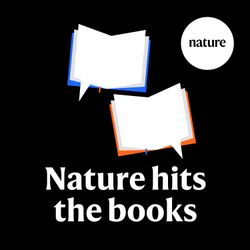
’Rapture and beauty’: a writer's portrait of the International Space Station
26:23|Samantha Harvey's Booker Prize shortlisted novel Orbital is set inside an International Space Station-like vessel circling 250 miles above Earth. It looks at a day-in-the-life of the crew, investigating the contrasts they experience during the 16 orbits they make around the planet, crossing continents, oceans and the line separating night and day.On the latest episode of Nature hits the books, Samantha joins us to discuss why the ISS is a rich setting for fiction, the challenges of putting yourself in the shoes of an astronaut, and how distance can give new perspectives on global issues like climate change.Orbital Samantha Harvey Vintage (2024)Music supplied by Airae/Epidemic Sound
Surprise finding reveals mitochondrial 'energy factories' come in two different types
27:36|00:46 Mitochondria divide their labour to help cells thriveResearchers have uncovered that mitochondria divide into two distinct forms when cells are starved, a finding that could help explain how some cancers thrive in hostile conditions. Mitochondria are cellular powerhouses, creating energy and vital metabolic molecules, but how they are able to do this when resources are limited has been a mystery. It turns out that in nutrient-poor situations, mitochondria split into two separate types, one which concentrates on energy production, the other on producing essential cellular building blocks. Together these allow cells to make everything they need. The team showed that this also happens in certain cancer cells, which may help them survive and grow under hostile conditions in the body.Research Article: Ryu et al.News and Views: Division of labour: mitochondria split to meet energy demandsVideo: A new kind of mitochondrion07:53 Research HighlightsA tidy genome may explain naked mole rats’ long lifespans, and why the midlife crisis may not be as ubiquitous as previously thought.Research Highlight: Naked mole rats vanquish genetic ghosts — and achieve long lifeResearch Highlight: The midlife crisis is not universal10:41 A smashing way to snapshot an atomic nuclei’s shapePhysicists have revealed a new technique to image the shape of atomic nuclei — by smashing them together. The nucleus of an atom doesn’t really resemble what is shown in textbooks — they actually come in a variety of shapes, which drive an element’s behaviour. Current methods essentially take a long-exposure photo of an atom’s nucleus, which doesn’t capture the subtle variations in how the protons and neutrons arrange themselves. The new method overcomes this by colliding nuclei together and then using information on the resulting debris to reconstruct the shape of the nucleus. The researchers hope that this technique can help physicists resolve many more mysteries about atomic nuclei.Research Article: STAR CollaborationNews: Scientists worked out the shapes of atomic nuclei — by exploding them19:51 Briefing ChatAnalysing the genome of an ancient clone forest has revealed it could be up to 80,000 years old, and how putting limits on the famous infinite monkey theorem means they probably wouldn’t churn out Shakespeare before the end of the Universe.Nature: The world’s oldest tree? Genetic analysis traces evolution of iconic Pando forestThe Guardian: Universe would die before monkey with keyboard writes Shakespeare, study findsSubscribe to Nature Briefing, an unmissable daily round-up of science news, opinion and analysis free in your inbox every weekday.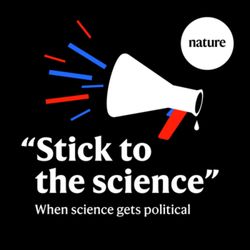
REBROADCAST: Talking politics, talking science
23:49|This series was originally broadcast in 2020.Science and politics are not easy bedfellows - "Stick to the science" is a three part series which aims to find out why.In the third and final episode we try to get to the bottom of how journalists, communicators and policymakers influence how science is perceived. We discuss the danger of politicization and ask the question - can science be part of the political narrative without compromising its values?This episode was produced by Nick Petrić Howe, with editing from Noah Baker and Benjamin Thompson. It featured: Deborah Blum, Bruce Lewenstein, Dan Sarewitz, Hannah Schmid-Petri, Shobita Parthasarathy, and Beth Simone Noveck. Further ReadingThe great fish pain debatePoliticization of mask wearingMasks workDonald Trump used a quote from Anthony Fauci to falsely suggest Fauci approved of his actions in the pandemicComparing Norway and Sweden in their coronavirus combating actionsBeth Simone Noveck argues for more open and transparent governanceSolving Public Problems, by Beth Simone NoveckSmart Citizens, Smarter State: The Technologies of Expertise and the Future of Governing, by Beth Simone NoveckThe Received Wisdom Podcast, with Shobita Parthasarathy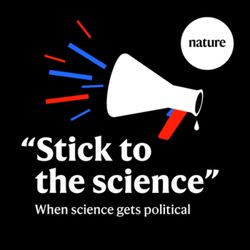
REBROADCAST: Politics of the life scientific
24:42|This series was originally broadcast in 2020.Science and politics are not easy bedfellows - "Stick to the science" is a three part series which aims to find out why.In this episode we're asking how politics shapes the life of a working scientist. Be it through funding agendas, cultural lobbies or personal bias, there's a myriad of ways in which politics can shape the game; influencing the direction and quality of research, But what does this mean for the objective ideals of science?This episode was produced by Nick Petrić Howe, with editing from Noah Baker and Benjamin Thompson. it featured contributions from many people, including: Mayana Zatz, Shobita Parthasarathy, Michael Erard, Peg AtKisson, Susannah Gal, Allen Rostron, Mark Rosenberg, and Alice Bell. Further ReadingBrazil’s budget cuts threaten more than 80,000 science scholarshipsMove to reallocate funds from scientific institutions in São PauloBacklash to “Shrimps on a treadmill”Explanation of the Dickey AmendmentAfter over 20 years the CDC can now fund gun violence researchSpirometer use “race-correction” softwareBlack researchers less likely to get funding from the National Institutes of Health in the USBlack researchers may get less funding from the National Institutes of Health due to topic choiceBlack researchers fill fewer academic roles in the UKClinical trials use mostly white participantsThe Received Wisdom Podcast, with Shobita Parthasarathy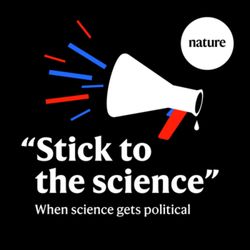
REBROADCAST: A brief history of politics and science
28:48|This series was originally broadcast in 2020.Science and politics are not easy bedfellows - "Stick to the science" is a three part series which aims to find out why.In this episode we delve into the past, and uncover the complicated relationship between science, politics and power. Along the way, we come up against some pretty big questions: what is science? Should science be apolitical? And where does Nature fit in?This episode was produced by Nick Petrić Howe, with editing from Noah Baker and Benjamin Thompson. it featured contributions from many researchers, including: Shobita Parthasarathy, Alice Bell, Dan Sarewitz, Anna Jay, Melinda Baldwin, Magdelena Skipper, Steven Shapin, David Edgerton, Deborah Blum, Bruce Lewenstein and Chiara Ambrosio. Quotes from social media were read by: Shamini Bundell, Flora Graham, Dan Fox, Edie Edmundson and Bredan Maher. And excerpts from Nature were read by Jen Musgreave.Further ReadingHistory of Education in the UKNature’s HistoryNature’s Mission statementNature editorial on covering politicsMaking “Nature”, by Melinda BaldwinNever Pure: Historical Studies of Science as if It Was Produced by People with Bodies, Situated in Time, Space, Culture, and Society, and Struggling for Credibility and Authority, by Steven ShapinDavid Edgerton’s writing on the history of science and politics in the GuardianThe received wisdom podcast with Shobita Parthasarathy
How to recover from the trauma of a climate disaster
35:23|00:48 Rebuilding mental health after the floodsResearchers have been investigating the best ways to help people deal with trauma in the wake of a climate disaster. In April and May devastating floods surged across Rio Grande do Sul in the South of Brazil, affecting two million people and killing hundreds. As people try to put their lives back together scientists have been conducting surveys and investigating how to make sure that any mental health issues don’t become persistent. We hear from some of the affected people and researchers in the region.This story was supported by the Pulitzer Center.News Feature: How to recover when a climate disaster destroys your city 13:48 Research HighlightsA new way to make ultra-heavy elements, and how some plankton swim by blowing up like a balloon.Research Highlight: Atomic smash-ups hold promise of record-breaking elementsResearch Highlight: This plankton balloons in size to soar upwards through the water16:54 What are your thoughts on the US election?Nature has conducted a poll of its readers to get a sense of what is on researchers’ minds in the run up to the US election. Overwhelmingly, the survey respondents identified as researchers and reported that they supported Vice President Harris (86%). Many also voiced concerns about a possible victory for former President Trump, saying that they would consider changing where they would live if he wins. Reporter Jeff Tollefson tells us more about the results and what the election means for US science.News: The US election is monumental for science, say Nature readers — here’s why27:07 Briefing ChatThe possible benefits of ‘poo milkshakes’ for newborns, and how Tardigrades can withstand incredibly high levels of radiation.Nature: ‘Poo milkshake’ boosts the microbiome of c-section babiesNature: New species of tardigrade reveals secrets of radiation-resisting powersSubscribe to Nature Briefing, an unmissable daily round-up of science news, opinion and analysis free in your inbox every weekday.
Audio long read: Which is the fairest electoral system? Mega-election year sparks debate
18:39|By the end of 2024 up to two billion people will have gone to the polls, in a pivotal year of elections around the globe. This is giving political scientists the chance to dive into each election in detail but also to compare the differing voting systems involved.They hope understanding the advantages and drawbacks of the systems will help highlight whether some are more likely to promote democratic resilience or to stave off corrosive partisanship.This is an audio version of our Feature: Which is the fairest electoral system? Mega-election year sparks debate
Massive lost mountain cities revealed by lasers
29:55|00:48 The hidden cities of UzbekistanResearchers have uncovered the scale of two ancient cities buried high in the mountains of Uzbekistan. The cities were thought to be there, but their extent was unknown, so the team used drone-mounted LiDAR equipment to reveal what was hidden beneath the ground. The survey surprised researchers by showing one of the cities was six times bigger than expected. The two cities, called Tashbulak and Tugunbulak, were nestled in the heart of Central Asia’s medieval Silk Road, suggesting that highland areas played an important role in trade of the era.Research Article: Frachetti et al.Video: Uncovering a lost mountain metropolis09:32 Research HighlightsHow children's’ movements resemble water vapour, and why coastal waters may be a lot dirtier than we thought.Research Highlight: Kids in the classroom flow like water vapourResearch Highlight: Sewage lurks in coastal waters — often unnoticed by widely used test12:06 Watermarking AI-generated textA team at Google Deepmind has demonstrated a way to add a digital watermark to AI-generated text that can be detected by computers. As AI-generated content becomes more pervasive, there are fears that it will be impossible to tell it apart from content made by humans. To tackle this, the new method subtly biases the word choices made by a Large Language Model in a statistically detectable pattern. Despite the changes to word choice, a test of 20 million live chat interactions revealed that users did not notice a drop in quality compared to unwatermarked text.Research Article: Dathathri et al.News: DeepMind deploys invisible ‘watermark’ on AI-written text22:38 Briefing ChatWhat one researcher found after repeatedly scanning her own brain to see how it responded to birth-control pills, and how high-altitude tree planting could offer refuge to an imperilled butterfly species.Nature: How does the brain react to birth control? A researcher scanned herself 75 times to find outNature: Mexican forest ‘relocated’ in attempt to save iconic monarch butterfliesSubscribe to Nature Briefing, an unmissable daily round-up of science news, opinion and analysis free in your inbox every weekday.